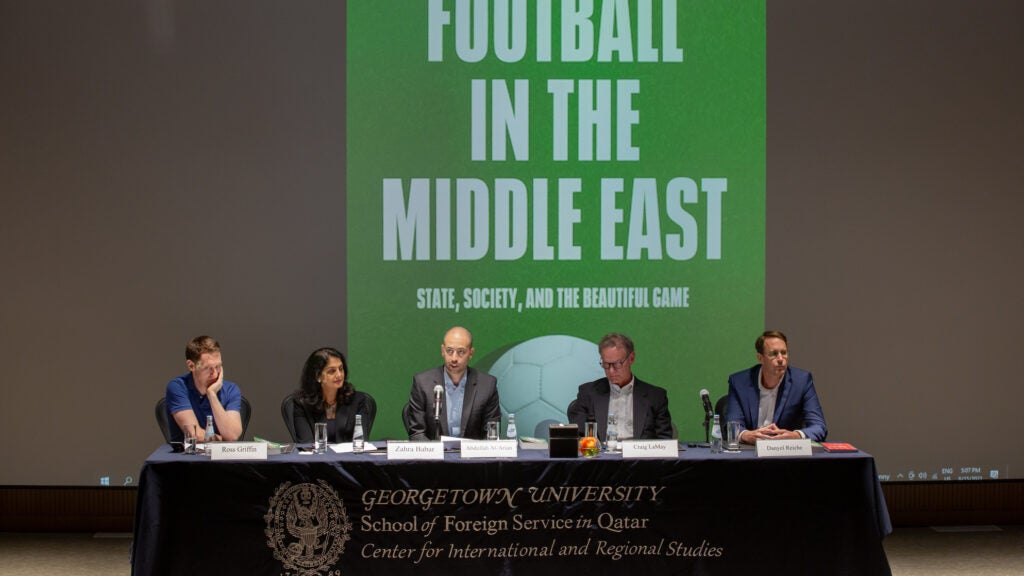Book Launch Highlights New Multiversity Research on Football’s Outsized Impact in the Middle East

The Center for International and Regional Studies (CIRS) at GU-Q invited the Qatari public to learn about the fascinating history of football in Qatar and the region at a book launch for their newest publication, “Football in the Middle East: State, Society, and the Beautiful Game”(Oxford University Press/Hurst, 2022) held at the auditorium of the 3-2-1 Qatar Olympic and Sports Museum, a Qatar Museums institution.
The event is part of a CIRS multi-year research initiative focused on the World Cup and Qatar’s investments in global sporting events as a strategic pillar of the Qatar National Vision 2030.
The panel featured four of the 12 contributing authors who presented groundbreaking analysis that emerged from working group sessions at CIRS. Topics included media misrepresentation of Qatar’s football team, the impact of BeIn Sports, the link between construction of mega projects and labor reform, and the sport’s exclusion of refugee communities.
Leading the panel discussion was Associate Professor of History at GU-Q and the book’s editor Dr. Abdullah Al-Arian, who said: “All of the contributions to this book demonstrate football is more than a game but rather a powerful and universal cultural force with the ability to capture the imagination and uplift populations across this region.”
Qatar University professor Thomas Griffin explored changing conceptions of citizenship that are reflected at the top level of the sport, including Qatar’s national football team. With the majority of players either Qatari or born in Qatar from diverse backgrounds, he said, “This team has become a mirror to the society that Qatar is today.”
Zahra Babar, Associate Director for Research at CIRS, noted that two decades before Qatar’s winning bid, the GCC was already emerging as the third largest global hub of migration and drawing scholarly interest. While continued reforms are needed, the tournament has already had a dramatic impact. “Migration and labor governance system in Qatar today looks distinctly different than it did in 2010.”
Media expert and Northwestern Qatar Professor Craig LaMay linked Qatar’s sports as a soft power strategy to the country’s emergence as a media giant in its sector, broadcasting in 24 countries and in every continent except for Antarctica. That dominance, he explained “is the reason why the MENA region is in the top 10 sports rights markets in the world.”
Visiting Associate Professor Danyel Reiche, who also heads a separate CIRS research initiative on the World Cup, discussed football’s nationality policies that exclude refugees. The majority of the global population of 10 million stateless people are Palestinian, he said, and national representation could instead be based on residence, a policy already used in rugby, cricket, and squash. “Sport as a human right means every individual must have the possibility of practicing sport without discrimination of any kind.”
A full list of CIRS publications, events, podcasts, and other activities around the first World Cup in the Middle East and its social, political, and economic impact can be found on CIRS and GU-Q’s website.